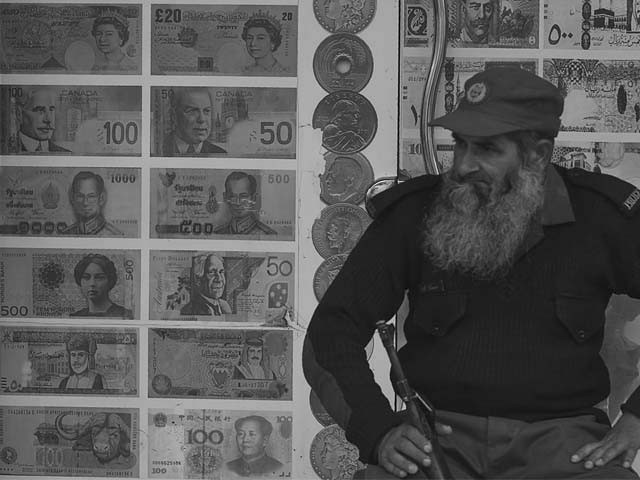SBP tightens grip on exchange rates
For accurate pricing, central bank directs dealers to submit daily rates to ECAP

In a significant regulatory move, Pakistan’s central bank has mandated open-market currency dealers to submit their day-end closing prices for the six major currencies to their association, aiming to establish a more accurate average buying and selling price for individual buyers and sellers at the close of each working day.
The State Bank of Pakistan (SBP)‘s directives, set to be effective from Tuesday, December 26, were outlined by Zafar Paracha, General Secretary of the Exchange Companies Association of Pakistan (ECAP), in a conversation with The Express Tribune.
The major currencies included in these directives are the US dollar, EU euro, UK pound, Saudi riyal, UAE dirham, and Japanese yen. Paracha conveyed that the SBP’s latest instructions obligate exchange companies to submit their day-end buying and selling prices to the association. Paracha said that this measure is designed to improve the overall pricing mechanism, leading to a more robust and reliable determination of exchange rates.
“The mechanism has already been put in place a couple of days ago,” he stated, clarifying that the average buying and selling price represents the mean of prices submitted by participating exchange companies. He added that the SBP’s directed pricing mechanism has been in operation for some time, but occasional lapses in voluntary rate submissions by exchange companies prompted the recent binding directives.
In cases where exchange companies deviate from the instructions, such as failing to submit rates on five working days in a month, the central bank may take corrective actions. This could include explanation calls, warnings, or other measures deemed appropriate by the SBP.
Paracha highlighted the close coordination between the SBP and ECAP in their ongoing efforts to enhance the pricing mechanism. The new directives are seen as the outcome of this sustained collaboration aimed at fostering transparency and efficiency in currency exchange practices.
The central bank, in a letter to ECAP, specified that exchange companies holding at least 75% market share collectively will be selected to provide exchange rates for the six major currencies. A minimum of eight exchange companies must contribute to establish a representative end-of-day rate. ECAP will ensure that a minimum number of contributors is available to provide the rate. If 75% market share is covered by fewer than eight companies, the next ECs in terms of market share will be selected to maintain a minimum of eight contributors.
Read FIA busts gang running illegal currency exchange
The selection of contributing ECs will be facilitated by the SBP and advised to ECAP based on their business volumes. According to the letter, the SBP has already identified 12 ECs for the next calendar year. Paracha revealed that verbal instructions indicated ECAP would collect closing prices from all 12 selected companies to report a precise average pricing. Contributing ECs are required to quote closing levels to ECAP, avoiding the use of daily averages or outdated rates, as outlined in a set of new instructions from the SBP to ECAP
Exchange companies will submit prices for major currencies between 4:00 pm and 4:30 pm on each working day. Following the compilation of data, ECAP will disseminate the average buying and selling rates of the six currencies to stakeholders by 5:00 pm, ensuring accuracy and reliability. ECAP assumes responsibility for verifying the accuracy of published data, with a prohibition on any other EC disseminating end-of-day exchange rates in the name of ECAP.
Additionally, any contributing EC failing to submit rates for five business days in a calendar month will be required to justify the reason for non-contribution to the SBP via ECAP, as per the provided instructions.
In conjunction with these regulatory measures, all ECs are mandated to use the mid-rate (average of buying and selling prices) of ECAP-published end-of-day rates for the revaluation of their books, including exposure calculation for regulatory purposes.
Under its $3 billion loan programme, the IMF has recommended a maximum difference of 1.25% between rupee-dollar exchange rates in the inter-bank and open markets over any five consecutive working days.
Published in The Express Tribune, December 24th, 2023.
Like Business on Facebook, follow @TribuneBiz on Twitter to stay informed and join in the conversation.



















COMMENTS
Comments are moderated and generally will be posted if they are on-topic and not abusive.
For more information, please see our Comments FAQ